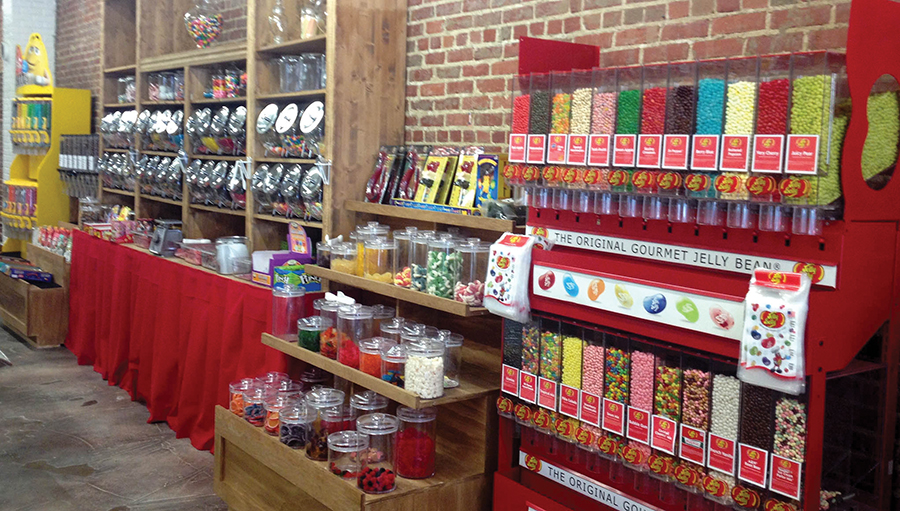Sensei & Sensibility
The ancient art of bonsai enhances Mendy and John Kearns’ midcentury home
By Cynthia Adams • Photographs by Amy Freeman
 Each home tells a story. It becomes the repository of past and present struggle and triumph, which is certainly the case of the High Point home of John and Mendy Kearns.
Each home tells a story. It becomes the repository of past and present struggle and triumph, which is certainly the case of the High Point home of John and Mendy Kearns.
In their case, their home is filled with unique expressions, both artifact and the organic.
The Kearns’ modern and eclectic home features a most unique interior drawn from three generations of family art history and heirlooms.
And then there is the unexpected — a living art form, bonsai, deepening and enriching their inner lives and exterior living areas.
Their private residence, surrounded by woods and landscaped grounds, is a sanctuary from the wider world, a space where the people and things they value most are closely kept.
The Kearns home has a modern vibe but dates to 1968. It is handsomely oriented to the back gardens and pool. Coursing behind the house, a small creek winds through landscaped grounds punctuated by Japanese maples that are redolent of bonsai. And, of course, inside the garden wall are a wide variety of potted bonsai almost everywhere you look.
The house belonged to NASCAR-owner Bill Davis before them, says Mendy. It is a pleasant, spacious house, oriented to the private yard with extensive windows off the living room.It is also a living laboratory for John’s passion for the ancient art of bonsai.
Mendy and their two daughters adore the classic pool, which hugs the lines of the midcentury modern home. John adores, and is obsessed with, the scores of bonsai surrounding the pool.
The Kearns’ residence speaks to honoring traditions — one they inherited and others imported from the Far East.
As a descendant of the Kearns family, owners of a once bustling High Point factory, John is steeped in history and a reverence for place.
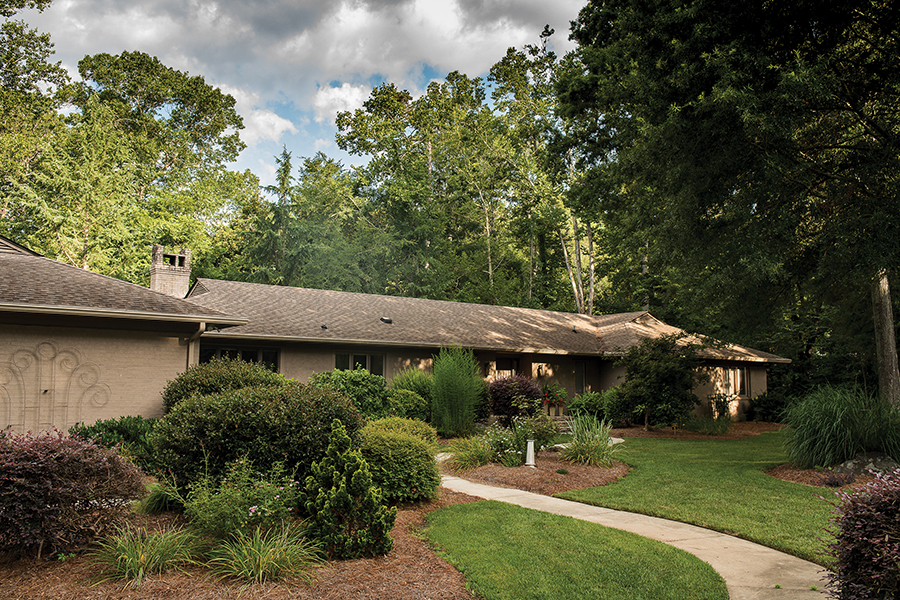
“My great-grandfather had a hosiery mill, called O.E. Kearns & Sons, on Hamilton Street.” (O.E. was his abbreviated name, Oscar Eugene, says John.) According to the City of High Point’s textiles archives, it was among five significant manufacturers: “Between 1910 and 1920, many well-remembered mills were started: Amos, Melrose, Crown, Triangle and O.E. Kearns. By 1923, High Point boasted 26 textile plants including 14 hosiery mills, and 42 percent of the revenue generated by city industries came from textiles. By 1940, there were two cotton mills, two silk mills, and 27 hosiery mills.”
The High Point Museum maintains examples of Kearns-made white cotton socks with a classic cuff in its collections.
The former mill, which closed in 1963, later housed Hamilton Fabrics, which John’s father, Tom Johnston Kearns, Jr., opened in 1978.
His father died in 2018, active in the business until the end. Now John is the second-generation family member to head Hamilton Fabrics.
John earned an associate’s degree at Lees-McCrae College before entering N.C. State to study horticulture and greenhouse operations. He finished his degree in December 1983 just as his father’s partner had quit. He sent inquiries to nursery businesses. “But it was dead of winter and they responded ‘try us again in April.’”
John’s father suggested he consider the fabric business.
“He said, if it worked fine, if not fine. I discovered the joy of the textiles business too.” Before John knew it, he had a sample case and a sales territory.
“I love the textiles industry; I found the joy in it,” he reflects.

John says while he made textiles his vocation, he found a niche that allowed him to remain in the natural world. It was bonsai, which he had discovered when a boy on the cusp of adulthood. Bonsai took on greater meaning once he accepted a position in the family business, one requiring time indoors and frequent travel.
Bonsai was how he decompressed from an over-stimulated world.
“It’s my therapy,” says John. “Some people play golf; I tried golf when I was little, and all it did was get me frustrated.”
Bonsai, on the other hand, was something one controlled.
It is singularly Asian. The Western mind seeks immediate gratification. Bonsai is not that; it is the very opposite. The cultivation of bonsai required exquisite patience and dedication, exemplified by Mr. Miyagi and his young mentee Daniel in The Karate Kid: “Think only tree,” he says. “Nothing else in the whole world, only tree.”
The art of bonsai becomes a study in self-awareness.
And while there are many devotees, it is hardly mainstream in America.
“There are what they call, ‘finish bonsai,’ on the market,” says John. But buying such a tree is expensive, and drains the joy out of it, he says. “Creating your own tree, watching it grow through the process of training,” is the joy of the experience.
From mid-February to spring, he devotes five to seven hours weekly to his craft. But during summertime, it’s a daily endeavor with frequent watering. In times of intense heat, the roots would dry and wither otherwise.
“Daily,” he stresses. His young daughters Maggie and Liza are sometimes involved in the watering.
Maggie once had her own bonsai tree. However, Liza rolls her eyes at the very suggestion of becoming more involved.
“No. Way.”
John laughs.
As he became a devotee of bonsai he gradually acquired “every book in print on bonsai, probably 75.”

He attends bonsai shows and seminars in and out of state. An Arkansas expert comes each February to give John a hand with the more labor-intensive aspects of bonsai maintenance.
The expert is so knowledgeable, “I probably learn more from him than anything. He used to be head of production at Brussel’s Bonsai in Memphis.” When he returned to his Arkansas roots, he began offering himself to support other enthusiasts. A tradition began, where the two men work together and prepare the bonsai for warmer months.
An annual Chicago-based bonsai show during August is attended by a couple of thousand, says John. He also occasionally attends a Winston-Salem club, and says it is “kind of like a car swap meet. You can take a tree and find out what is happening if you have a problem. Or learn more about what works for one plant versus another when it comes to pruning and watering.”
Mendy quickly says, “I really don’t know much about it,” yet manages to convey with a smile that perhaps she does.
Mendy is a Certified Public Accountant and vice president. Like John, she works in the family business at Hamilton Fabrics.
“I have three coats made from Hamilton Fabrics I wear to markets,” says Mendy. The on-trend coats and skirts were custom- created by a seamstress in High Point to showcase some of their most interesting and au courant products. It worked, says Mendy. “They are eye-catching.”
Everything in the living room is covered in Hamilton Fabrics, she adds. “The antiquities are mostly from John’s family.”
However, some of the living room artwork was painted by her mother and grandmother. In the kitchen there’s a colorful display of art created by Maggie and Liza.
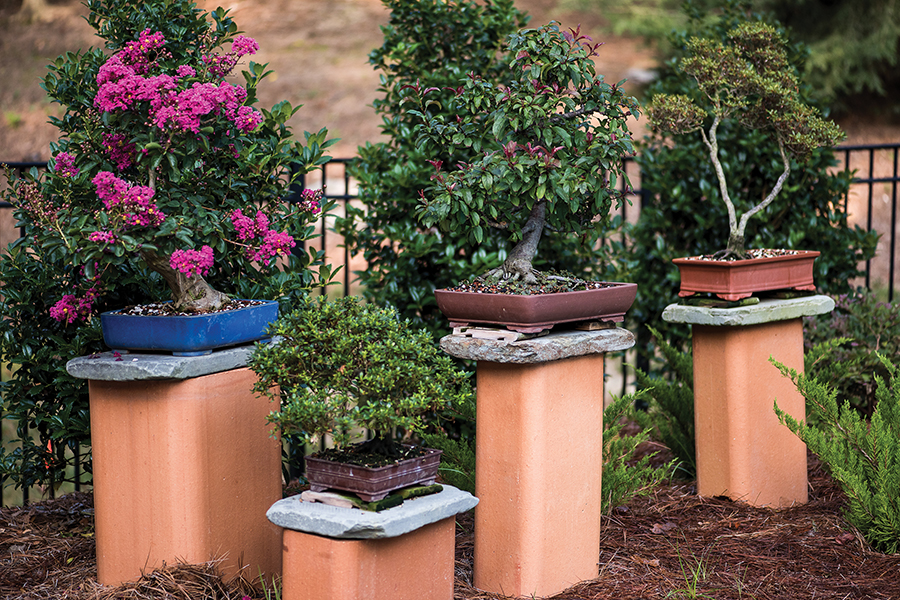

The antiques throughout their main living areas have been in the family for several generations, says John with quiet pride.
His great-great grandfather began a furniture company called High Point Mantel and Table, actually in the same block as the family’s now defunct hosiery mill. “They made fireplace mantels, kitchen tables and desks.”
The family own pieces from his great-grandfather’s furniture company, including a library-style table and other table and chairs.
A walnut freight desk in the living room once held bills of lading for outgoing freight in the warehouse of his grandfather’s hosiery mill.
“When I was a kid, it was all beat up,” John says, remembering when it was still in the factory. A functional piece, the joints are intricately joined and dovetailed — no glue.
“They kept the paperwork for freight shipments here,” he explains.
John’s father had the standing desk refinished. It is such a great piece, he kept it in his bedroom and later passed it along to John and Mendy.
The oldest piece in the family’s possession dates back to the colonies. “This chest came over on the Mayflower,” says John, indicating a simple pine chest in front of the den sofa.
“On the family tree (above the sitting room mantel) is an ancestor who was a passenger on the Mayflower. The chest was theirs.” Someone, he laments, had “painted it Pepto-Bismol pink; I had it stripped down.”
His father helped develop the family’s ancestral tree, plotting the genealogical histories. It was he who established the provenance of the Mayflower chest.
In the living room John points out a game table with remarkable, somewhat formal design, intended for chess or checkers, “that has been in the family for generations.”

He moves into the dining room, stopping at a mint-condition, wood-encased radio that still works. “It’s been a while since I plugged it in, but this radio was in my great aunt’s house in Charlotte.” (She also left John another treasure and even greater rarity; a camel saddle.)
The library-style glass-front cabinet the radio rests upon was once used in the family hosiery mill and dates to the turn of the 20th century by John’s estimate.
Yet Liza, who is watching as her father gives a tour, “would probably paint it,” John accuses, and gives her an affectionate grin. “I ask her what she would do if she inherited all this stuff? She hates old brown furniture.” He watches closely for a reaction.
Liza good-naturedly shrugs.
Exiting the kitchen, with a brief nod to the camel saddle which looks much like a quirky stool, John returns to his other favorite topic: the great outdoors. “My parents were both avid gardeners. I grew up in the garden,” he says.
He marvels. “You could order a bonsai for $9.99,” he says, standing before a wired bonsai in his collection, which he estimates is 40 years old.
“I pointed out a bonsai, and said ‘I want one of these.’” John was only 13 years old at the time.
“It lived about two weeks, but died, and I kept the container and put another tree in . . . it lived maybe four weeks and it died.” John persevered.
“I finally got the hang of it. One [bonsai] led to a picnic table full of maybe 12–14. By this time, I was probably 17.”
Instead of focusing upon girls or cars, he was admittedly obsessed with care and cultivation of miniature, manicured trees. Then John laughs again. “I liked cars too,” he corrects. “I drive a big Suburban, but it’s more for work, filled with (fabric) sample cases.”
After marriage, he and Mendy acquired a house and a greenhouse,
where John tended a steadily growing bonsai collection numbering more
than 150 trees.
The house, one of unique design by Norman Zimmerman, with
extensive gardens including a waterfall and koi pond, was unsuited
for children. “It wasn’t working for the girls.” The young couple stuck
a for-sale sign out “and sold it the next day.”

There was no choice but to whittle his collection down. After the family decamped to a High Point condo, John had to sell all but five of his beloved trees. “It was fun, but I was ready for a break from it.”
But he had not left bonsai behind. “I kept all my tools.”
John says, “It was a full-time job keeping the bonsai trimmed and sprayed . . . I travel a lot, too, and then came home and spent time in the greenhouse Saturday and Sunday. Maggie, my oldest, had her own tree.”
Most of John’s bonsai are outdoor varieties that he can over-winter in his garage. Only two are tropicals.
One is a Brazilian rain tree that winters indoor, one of only two that he brings inside as temperatures plunge. The other is from the Beautyberry family, native to exotic, warmer climates. John points out hardier bonsai varieties, including flowering quince, crepe myrtle, and a zelkova.
Then John only touches briefly upon the true price of his passion; of what bonsai requires. Bonsai is a jealous mistress of his free hours.
“It’s ideal for retirees, someone with time on their hands,” sighs John.
It is an ongoing process.
“I had a propagation bed where I’d grow cuttings 15 years ago. I gave a friend a small boxwood bonsai. It turned out really nice. When he sold the house, he allowed me to dig it up and replant it.”
Now, John maintains seedlings in a training area. Seedlings of Trident maples will be separated later for a better presentation. If he finds a contorted “reject” tree at a garden center, he buys it. Bonsai does not strive for straight lines but artfully gnarled and twisted profiles. “You do not want perfect and straight.”
There is the perpetual hunt. In a display area is a “grove” of Beech trees John collected in the woods four years ago, as well as a Sweet Gum he found. “I kept them separate containers to let them get established then put them together in a ‘forest’ planting this spring.”
Each year “you have to repot, root prune and maintenance prune. It’s very maintenance intensive. You can skip it maybe one year, but if you don’t do it, they get root bound.”

The work requires a fixed routine beyond merely repotting: “Rake the roots off and put them into fresh pots.”
The branches are also wired to follow a beautiful pattern suggesting traditional bonsai. He uses copper wire on the branches to achieve that signature look. “This gives them movement,” he says.
As winter approaches, John loads the bonsai individually onto separate rolling carts and moves the fragile trees under cover in the garage. He rolls them out to water.
Among his collection is a 40-year-old Trident maple from a Mississippi collector. He acquired it from his Arkansas bonsai source.
Yet one of the oldest in John’s present collection is an Elaeagnus, remaining from his bonsai-intensive house.
“The lone survivor,” he says. “Native to China. It is an evergreen. It’s probably 50 years old.”
He had to cut away some of the bark and decay, a mark of bonsai’s transcendence over perfection.
John grows quiet. “It is a beauty.”
He is aware his collection is unusual.
“It is art,” John says. “That’s what it is.” OH
Cynthia Adams is a contributing editor to O.Henry.
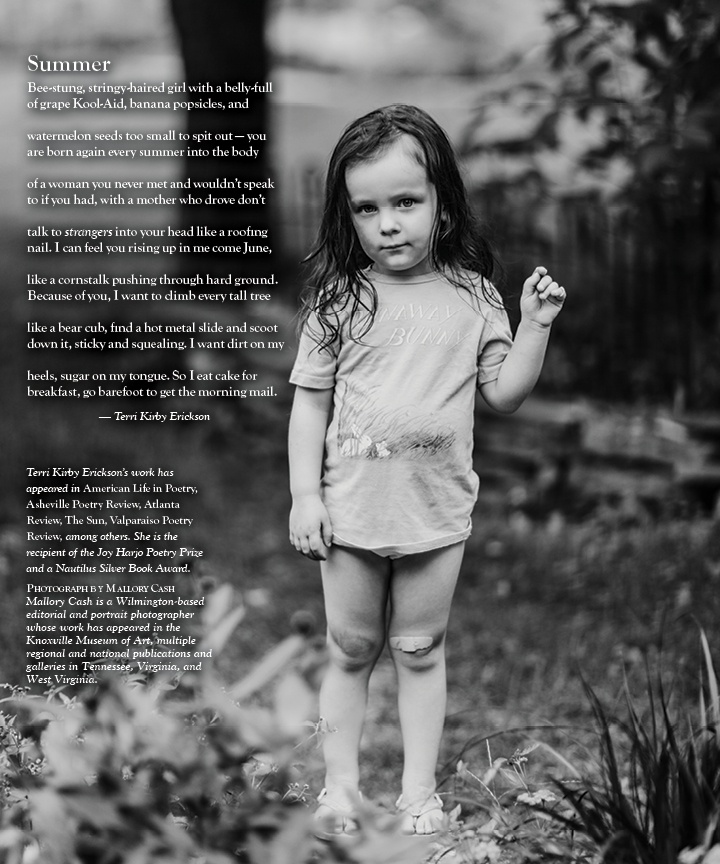
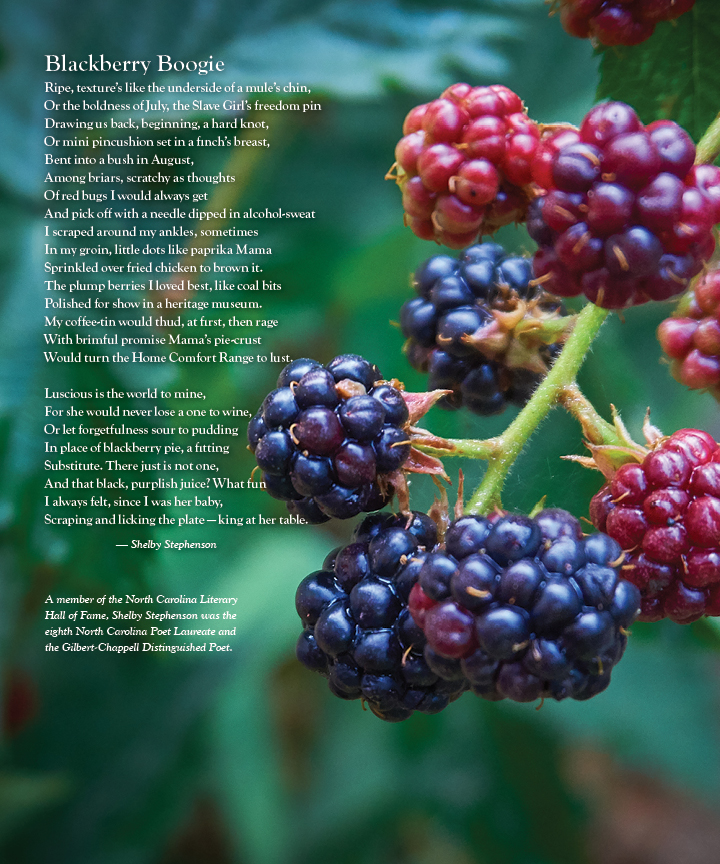
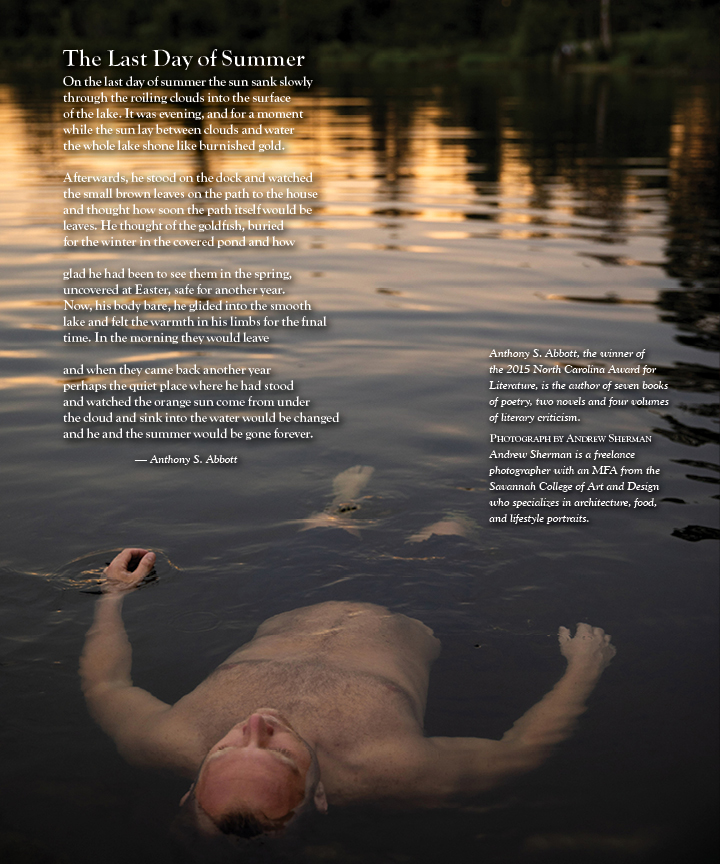
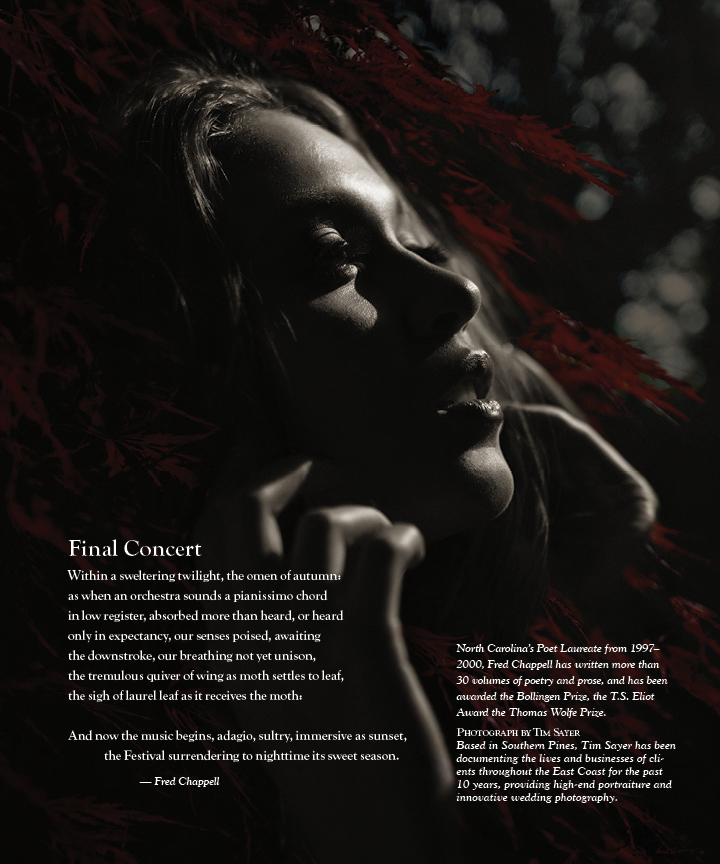
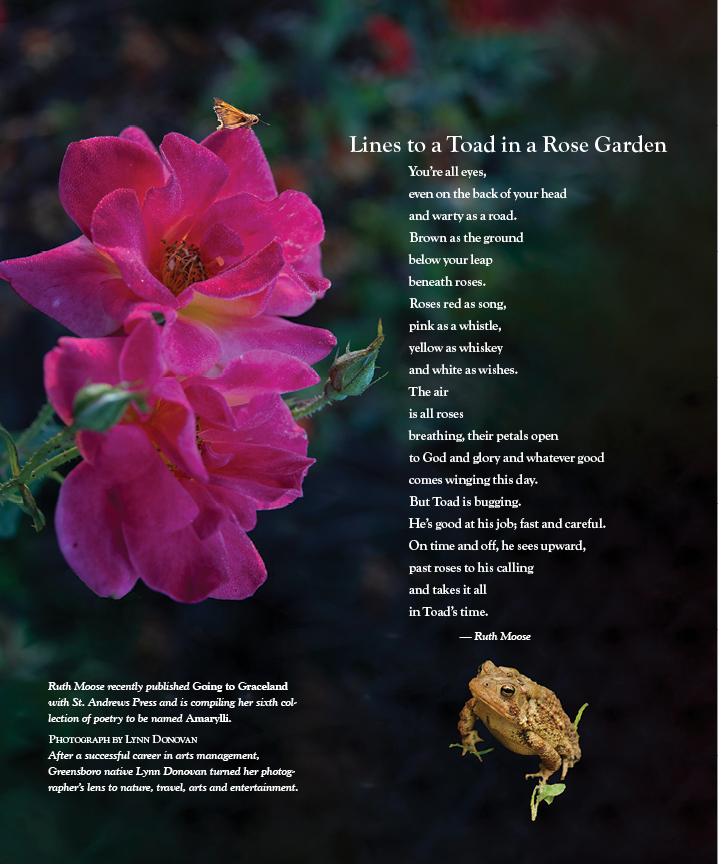
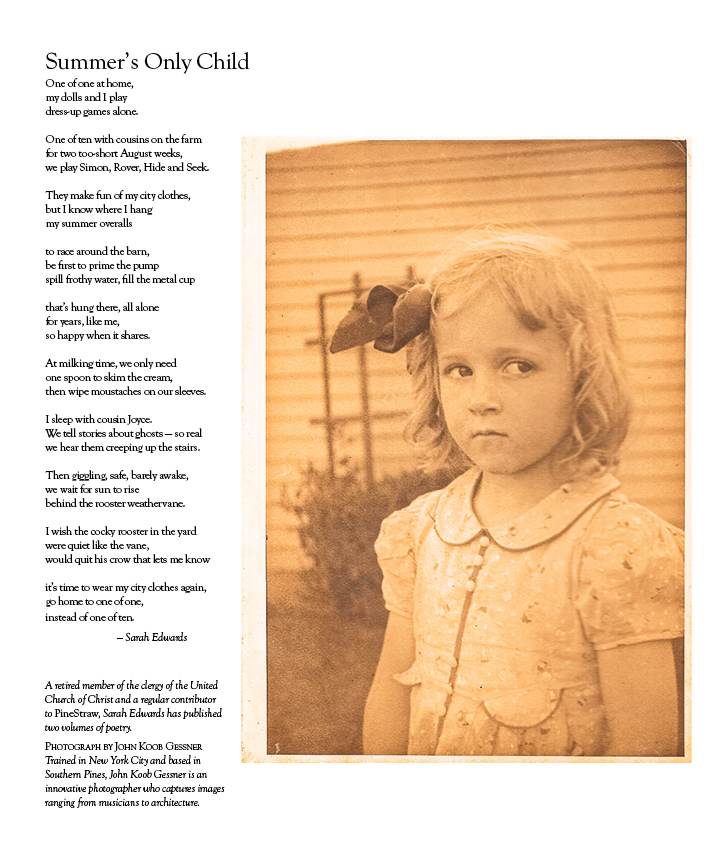
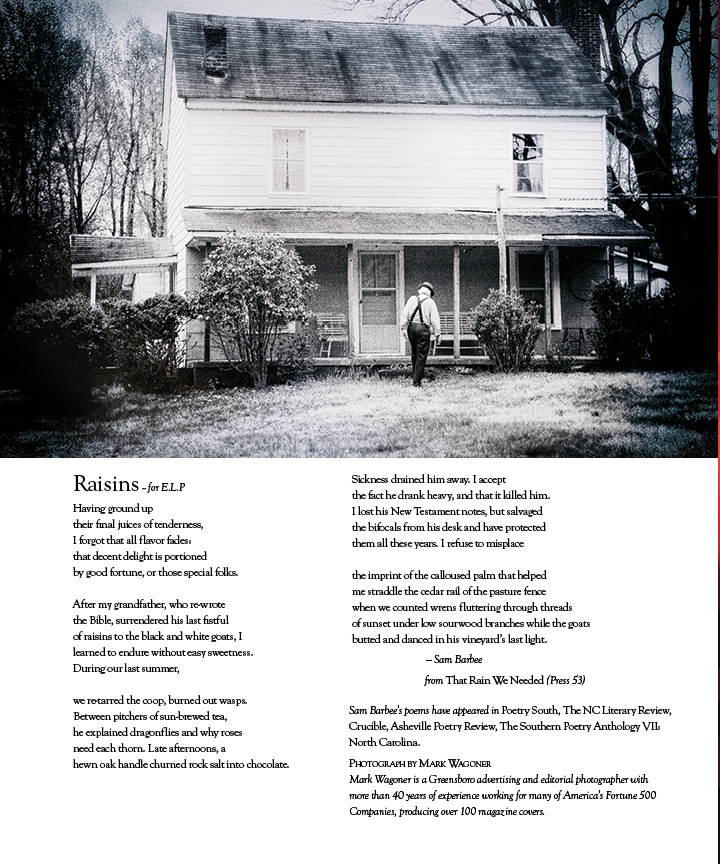
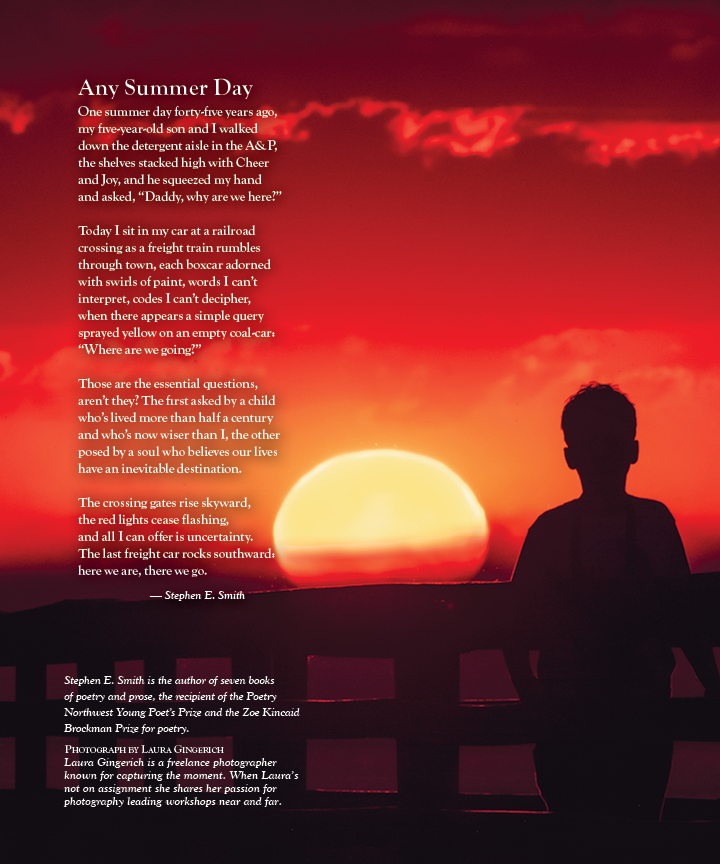

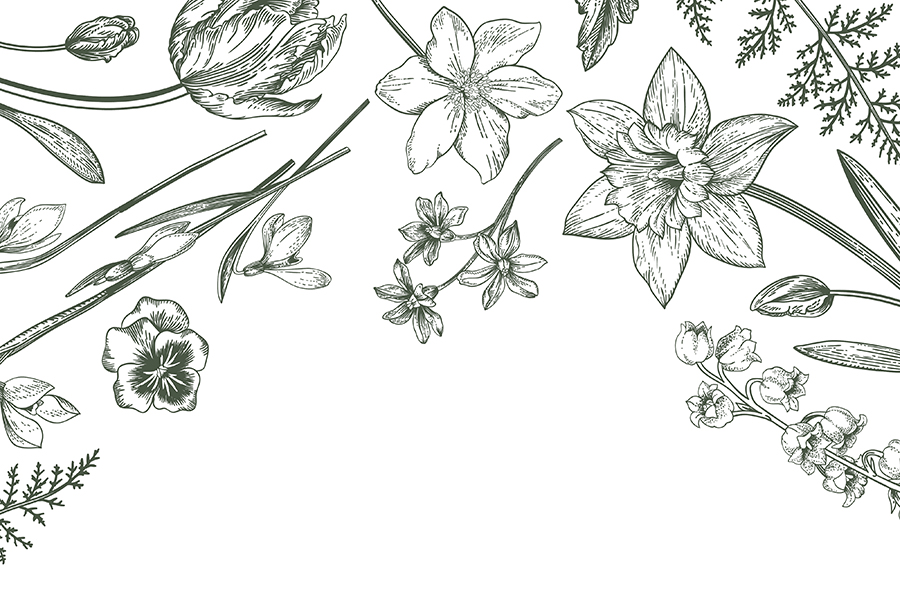

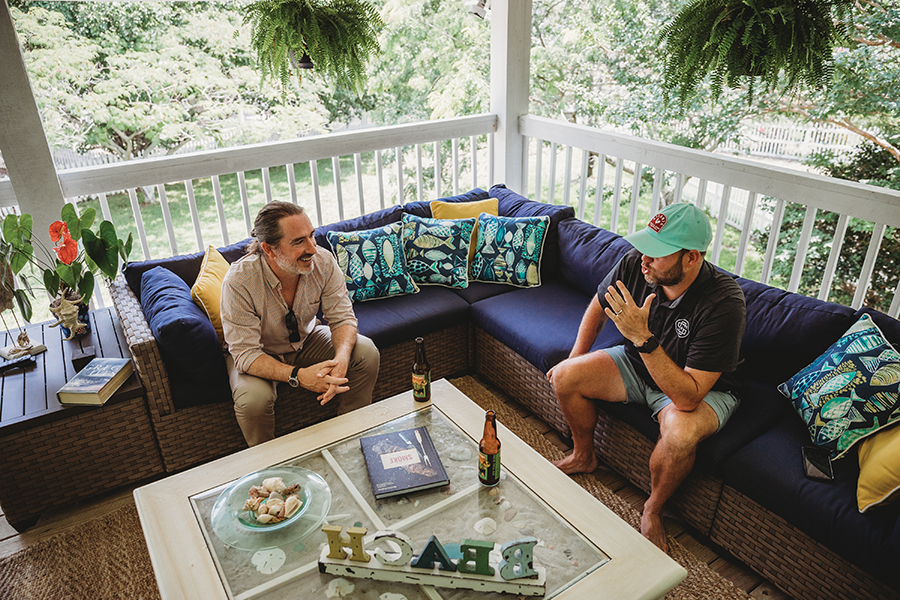



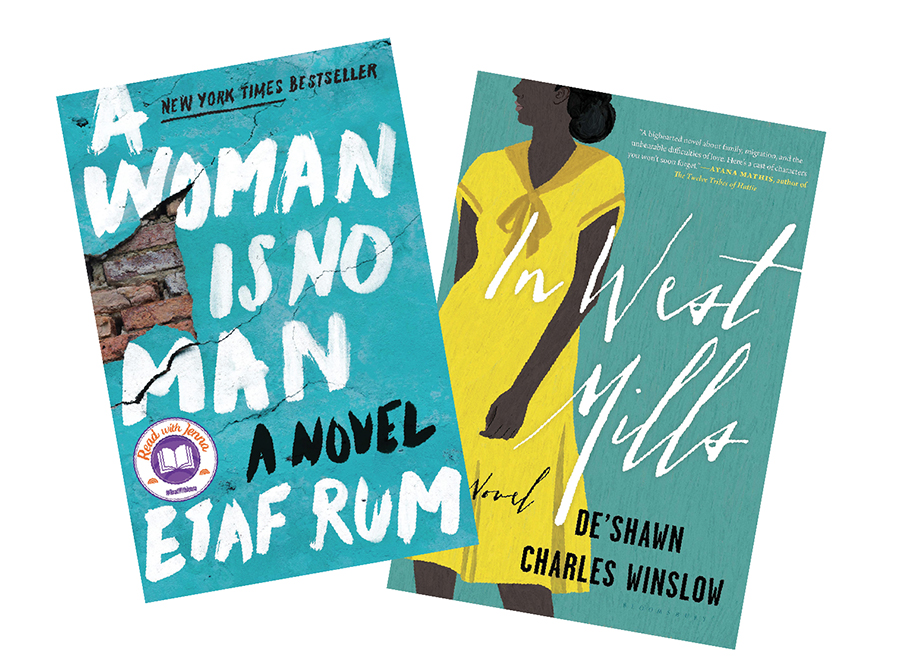
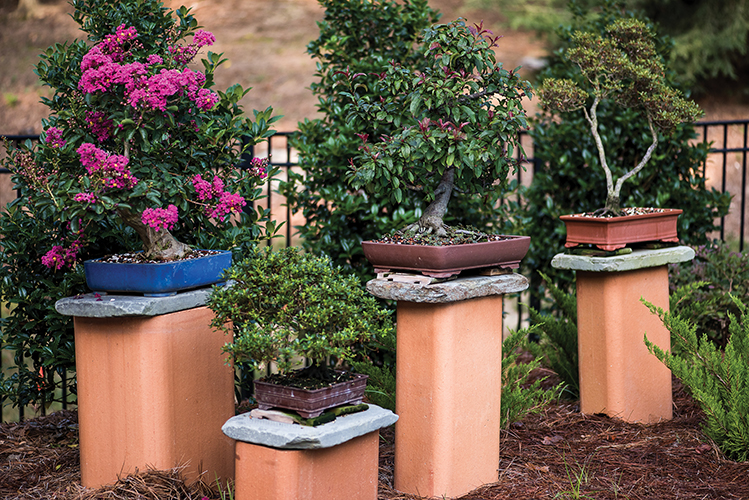
 E
E








